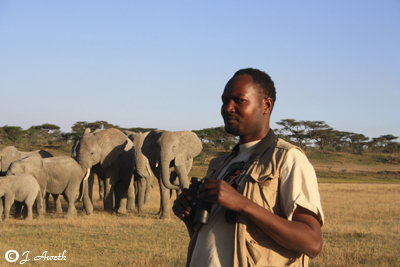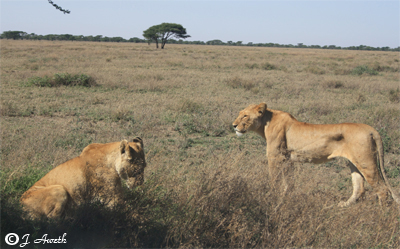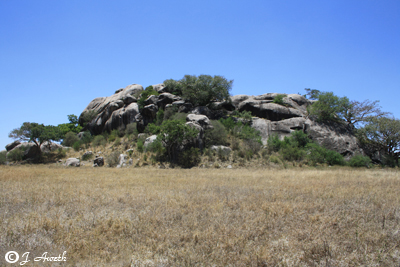TARANGIRE NATIONAL PARK
| Tarangire National Park is located about 120 km west of Arusha at an altitude of 1100 m. The Tarangire River flows through the park and attracts great numbers of zebras, antelopes, giraffes and elephants. The park also boasts rarer species including the eland, oryx and gerenuk, also known as the "giraffe-gazelle". Tarangire is made of low hills, covered with acacia trees and dotted by the gigantic, mythic and most impressive baobab tree. Baobabs are grey in color and seem to glitter in the sunset, and are mostly all trunk and branches with very little leaves. Often hollow, the trees have given rise to many legends. Herds of elephants roaming among the baobab trees at sunset is an image that will remain ingrained in your mind for ever. |
 |
LAKE MANYARA NATIONAL PARK
| Manyara is a small park (330 km2) located between the Rift Valley escarpment and the lake on the way to the Ngorongoro Conservation Area. From the entrance gate visitors will meet the baboons in the midst of a green and lush groundwater forest, dominated by large ficus trees and the surprising sausage trees. Beyond the forest live elephants, antelopes, buffaloes, giraffes, and wildebeests and zebras roam the floodplains. Near the lake hippos take shelter from the sun. The alkaline lake is shallow and attracts many birds including flamingos, pelicans and herons. The name "Manyara" comes from the Maasai word "emanyara", which is a euphorbia species of plant that is grown into a hedge around a family homestead. |
 |
ARUSHA NATIONAL PARK
This small park of 137 km2, located 25 km north-east of Arusha, is better known for its scenery than its animal life. In addition to the Maasai who live there, the park is mostly populated by giraffes, zebras and buffaloes. You will discover Mount Meru, Ngurdoto Crater, Momella hills and its hidden alkaline lakes which are home to a great variety of birds and large flocks of flamingos. Your driver and guide will take you to the forest in search of the black and white Colobus monkey and its bushy tail. You may also go on a walking safari accompanied by a ranger. Don't forget your binoculars!
NGORONGORO CONSERVATION AREA
| The Ngorongoro Conservation Area has an area of 8,300 km2, but its main attraction, the Ngorongoro Crater covers only 3% of that. It has been a UNESCO World Heritage Site since 1979 and is often referred to as the "eighth wonder of the world". At 600 m deep and 18 km wide, it is probably the biggest natural amphitheatre on earth. You will first be struck by its vastness, and then by the diversity of its habitats, open grassland, lakes, swamps, and forested areas. Grass, water and shade, provide the ideal living conditions for a large number of large mammals (about 25,000 animals). This is one of the rarest place in Africa where you might see the famous "Big Five": buffalo, elephant, leopard, lion and rhino. Unlike the national parks, the Maasai, who have been living there for centuries, are allowed to live in the Ngorongoro Conservation Area. |
 |
SERENGETI NATIONAL PARK
| The Serengeti National Park is quite probably the best known game park on the planet, and one of its largest: 14,763 km2. While the vast grassland plains are home to millions of herbivores such as antelopes, gazelles, zebras and wildebeests, granite outcrops called "kopjes" also provide ideal lookout points for the predators. The Serengeti, parts of the Maasai Mara in Kenya and the Ngorongoro Conservation Area (about 25,000km2) share the same ecosystem and witness every year the largest migration of mammals on earth. The Serengeti became a national park in 1951 and today is a UNESCO World Heritage Site. Its name comes from the Maasai word "siringet" which means endless plains. |
 |
|
